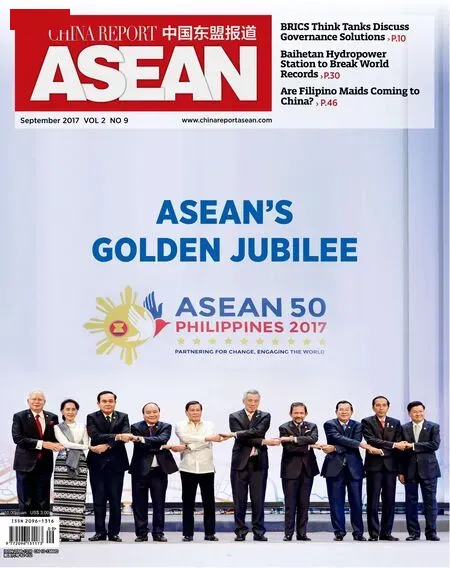BACK TO HANOI
2017-09-18TextandphotographsbyPengShituan
Text and photographs by Peng Shituan
BACK TO HANOI
Text and photographs by Peng Shituan
Chinese Cultural Counselor marvels at the dramatic changes happening in the Vietnam capital over the years since his first visit in 1992
Standing at Terminal 2 of the Beijing Capital International Airport on the afternoon of Jan. 4, 2017, I bade farewell to China, feeling both nervousness and excitement at the prospect of taking on my new position as Cultural Counselor at the Chinese Embassy in Vietnam.
It’s hard to say how many times I have flown between Beijing and Hanoi. On the eve of the Chinese National Day (Oct. 1) of 1992, as part of a delegation including artists from the China Oriental Song and Dance Troupe, I visited Vietnam for the first time. We departed from the newly completed terminal (now Terminal 1) of the Beijing Capital Airport and boarded a China Southern Airlines flight, which arrived in Hanoi via Nanning, capital of China’s Guangxi Zhuang Autonomous Region. It was also along this route that I made my most recenttrip to Hanoi in February 2006, accompanying former Chinese Minister of Culture Wang Meng and his wife on a visit to Vietnam. This time, in contrast, I travelled alone, taking a Vietnam Airlines direct to the Vietnamese capital.
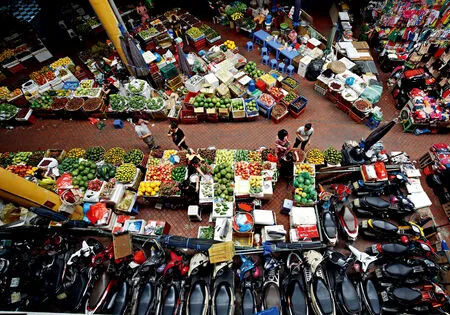
Vendors are seen at the Hom Market in Hanoi, Vietnam on May 17, 2017.
Back in 1992 when I first visited Vietnam, the United States still maintained a trade embargo on the country, and its airline industry remained underdeveloped. The majority of aircraft in service were of the Russian-built Tupolev 154 variety, and the type we took from Hanoi to Da Nang could barely carry the necessary luggage after all the members of our delegation got aboard.
More than 20 years had passed, and I found myself embarking on a journey back to Hanoi, this time boarding a Boeing 777 twin-aisle jet operated by Vietnam Airlines. At Hanoi airport, I met a group of young Vietnamese on their return from Russia. Showing high spirits and confidence, they did not carry large luggage, contrasting starkly with my fellow Vietnamese passengers in 1992 who took as many packages as they could from Beijing to Hanoi. Also, I noticed that the passengers on board with me this time were mostly Chinese.
Later, I heard from my colleagues that according to the Vietnamese tourism authorities, Chinese tourist visits to Vietnam topped 2.7 million in 2016. I remember back in the 1990’s very few Chinese visited Vietnam for tourism purposes, and most of the Chinese citizens who traveled to Vietnam went there for business trips or government functions. Vietnamese data show that in 1995 the total number of Chinese citizens visiting Vietnam for various purposes was less than 62,000, while the country’s relatively backward tourism attracted only 1.35 million foreign tourists. In 2006, Vietnam received some 3.6 million tourists from around the world, and in just 10 years, that figure had skyrocketed to 10 million. My Vietnamese friends hope that this year will see an increase of 2 million foreign visitors.
My Vietnamese language skills had regressed in my time away from the country, so I killed time on the flight by watching two Vietnamese films,Mrs. Tu HauandAnonymous Eucalyptus. The former is about the Vietnamese war of independence against France in the mid-20th Century, while the latter narrates Vietnam’s Resistance War Against America— both eulogizing Vietnamese women’s tenacious faith and their spirit of sacrifice.
I met Tra Giang, the main protagonist inMrs. Tu Hau(1963), during my previous tenure of office at the Chinese Embassy in Vietnam. Le Vy, who played the leading role inAnonymous Eucalyptus, hails from a family of artists. Her father, Tran Tien, and her mother, Le Mai, are both heavyweights in the Vietnamese drama community. Her sister Le Van wowed the audience with a fantastic peacock dance during a 1992 art tour in China following the Vietnamese National Song and Dance Ensemble, and another sister Le Khanh was an actress with the Vietnam Youth Theatre more than 10 years ago. She now serves as deputy director of the Theatre. Le Vy herself, however, has left Vietnam and moved to Paris.
After assuming my current post, I met with officials at the Cinema Department under the Vietnamese Ministry of Culture, Sports and Tourism (MCST), learning that the Vietnamese film industry has made remarkable progress inrecent years. Although all of the country’s film studios are now privately funded, annual production has not decreased, with 40-plus movies produced in 2016. As younger generations have become major film consumers, a variety of modern, high-end cinemas have emerged across the capital. Over the past few months, I have visited such cinemas several times, and the facilities impressed me with their excellent performance in both overall environment and sound quality. On scorching summer days, in particular, it was an amazing experience to sink into a comfortable cinema seat and watch a newly released American blockbuster for just US$5, or even a mere US$3 if it was a less popular film. I marveled at the great changes brought by the country’s economic development to its film industry. The days when I joined an official at MCST’s Department of International Cooperation in carrying a projector to screen films at Hanoi cinemas have become history. The Hanoi Film Festival we initiated together about two decades ago has evolved into the biennial Hanoi International Film Festival.
The sky just cleared up after the rain when my flight landed at Hanoi airport. The modern Terminal 2, brought into use in early 2015, was brightly illuminated and provides passengers with a comfortable, convenient and efficient experience. In the past, I had to complete an entry form at the airport, but now Vietnam offers visa-on-arrival for Chinese citizens. Beginning this year, in an effort to promote tourism, Vietnam has launched services for Chinese citizens to apply for visas online.
I still remember the terminal in use at Hanoi airport during my first visit was a single-story building with simple facilities. In just 10 years or so, as a result of the country’s economic growth and its increased international communication, the Hanoi Noi Bai International Airport Terminal 1’s annual capacity soared from 9 million to 12 million passengers, leading to the construction of Terminal 2, which is designed to handle 15 million passengers annually. While Terminal 2 is used for international flights, Terminal 1 mainly serves domestic flights.
My colleagues picked me up at the airport. After exiting the airport, our car went the opposite direction from the original airport highway. I joked with my colleague, “This expressway looks nice, but are you sure we are not getting further away from our destination?” He laughed, replying, “The original highway is still in service, but this new airport expressway is much faster.”Indeed, the new terminal and the new airport expressway, as well as a new bridge, as landmark gateway projects of Hanoi, combine to present a marvelous landscape.
My colleague told me that my residential community is not far from Lotte Center, which encompasses a supermarket and a shopping mall. The city’s BRT (bus rapid transit) project has begun operation. The Cat Linh-Ha Dong Line, Vietnam’s first urban railway constructed by a Chinese company, will be completed soon. The walkway along the banks of Hoan Kiem Lake now serves as Pedestrian Street during weekends. A Confucius Institute has been establishedat Hanoi University.
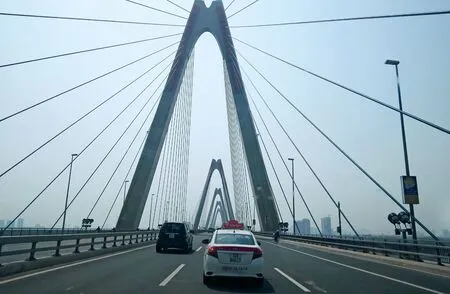
One of the seven bridges spanning the Red River, Nhat Tan Bridge links urban Hanoi with Noi Bai International Airport.
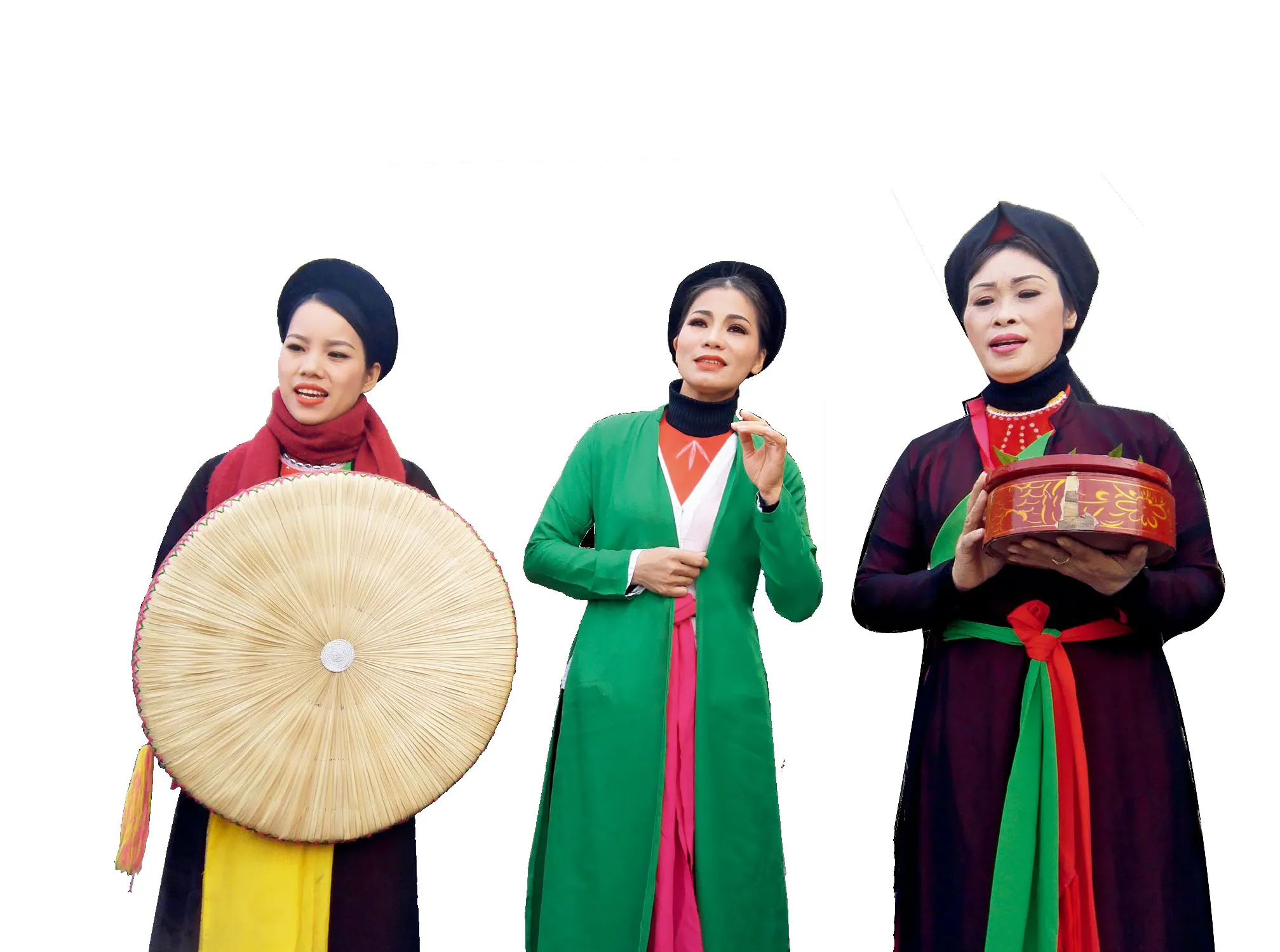
A Hanoi folk song performance.
Hanoi University, formerly Hanoi University of Foreign Studies, used to be one of the very few campuses offering Chinese language education in Vietnam. The addition of a Confucius Institute will effectively strengthen the school’s Chinese language teaching. Hanoi University is located in a college district in the southwestern part of the city. The road leading to the district was originally lined with tobacco factories, rubber plants and soap workshops established with Chinese assistance, which no longer or will soon no longer exist. The Cat Linh-Ha Dong Line, Hanoi’s first light rail, will traverse the district after it is put into service by the end of this year.
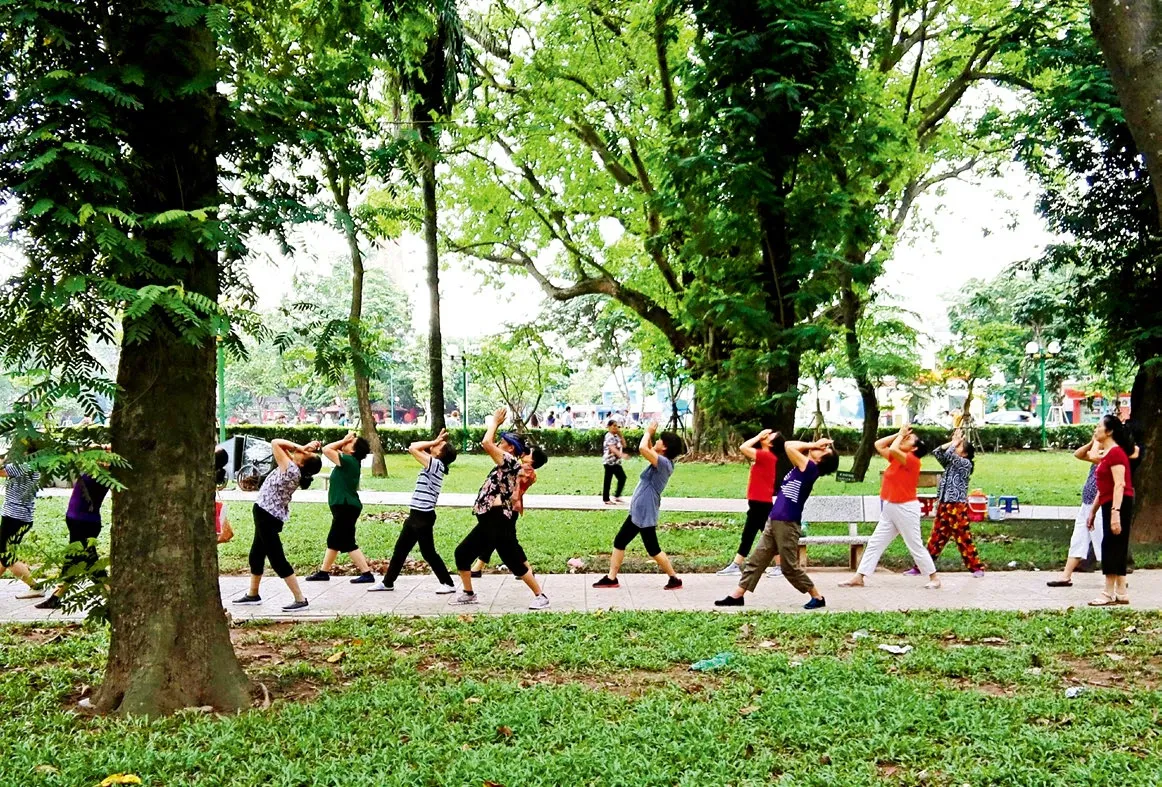
Women performing morning exercises.
Most of my old Vietnamese friends have retired, but they were as hospitable as ever, inviting me to dinner and asking me if I needed any help. Such kindness gave me a warm feeling in my heart.
After settling down in Hanoi, I spent the first weekend experiencing the Pedestrian Street. The Hoan Kiem Lake area is the commercial and leisure center of Hanoi, adjacent to the old urban district. Now refurbished as a pedestrian street, the narrow lakeside path has become more appealing. I found a cozy corner at a waterfront pavilion, sipping a cup of Trung Nguyen coffee in the breeze from the lake. The iconic flags of Den Ngoc Son (Temple of the Jade Mountain) and the Turtle Tower sitting in the middle of the lake, as well as endless streams of tourists in the surrounding areas, look the same as decades ago, but without noisy automobiles, this place lends a comfortable, laidback atmosphere.
I remembered My Dinh as a small Hanoi county, far from the downtown area. But today, it sits beside the city’s Third Ring Road, in juxtaposition with a number of universities and colleges, a modern village for college students, the National Convention Center, a newlyestablished museum and the nearly-completed Sino-Vietnamese Friendship Palace.
Later, at the Royal City Mega Mall and Lotte Center Hanoi, I was overwhelmed by the remarkable fruits of the city’s modernization, so much so that I snapped photos and shared them with my family back in Beijing. Standing on top of the Lotte Center, I felt as if Hanoi’s urban structures had grown tall enough to form a cement forest. In another weekend, I visited Ecopark, a rich enclave hidden in the suburbs. It is a real greenbased community, in which lush tree canopies provide ample shade and residents live a slowpaced life. Nearby is the famous Bat Trang Ceramic Village, where housing prices average US$1,200 per square meter, a pretty high rate compared to local residents’incomes. Actually, Hanoi’s real estate prices have remained high for several years.
When it comes to consumption, Vietnam’s telecommunication is noteworthy. I still remember that back in 1992, I was charged at least US$3 a minute for an international call from Hanoi to Beijing. Around the year 2000, the internet and mobile phones began to penetrate Vietnam, but there was only one telecommunication operator, Vietnam Mobile Telecom Services Company, and charges for telephone calls remained expensive. These days, Vietnam has three mobile network operators, WiFi is everywhere and 4G network coverage has been continuously expanded. Chinese mobile phone brands including Huawei and Vivo hold a lion’s share of the Vietnamese market, and almost everyone in the country has a mobile phone.
After work, I often take a walk along Ngoc Khanh Lake and Giang Vo Lake near my residence. Both lakes used to be muddy ponds. Even so, I still have a pleasant memory of the soothing aroma of coffee lingering above Giang Vo Lake. Nowadays, the previously muddy lakes have been renovated, laced by neat, flat trails and dotted with artificial floating islands, aerating fountains, wild ducks and garbage collection boats. The water is clear, reflecting the flowing light emitted from the surrounding high-rise buildings at night. One day, together with my colleagues, I strolled along the paved walkway on the banks of the expansive West Lake, where lighthearted people exercising were seen everywhere. Even the southern suburban park I toured years ago has been greatly improved, taking on an unexpectedly new look that attracts floods of visitors.
some 3.6 million tourists from around the world, and in just 10 years, that figure had skyrocketed to 10 million. My Vietnamese friends hope that this year will see an increase of 2 million foreign visitors.
